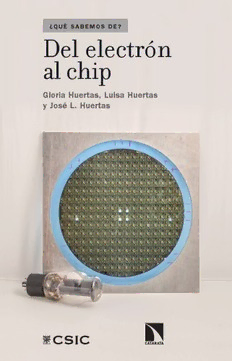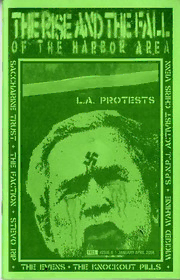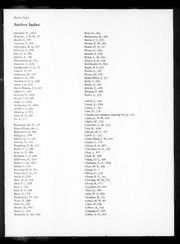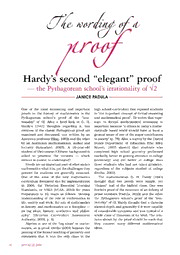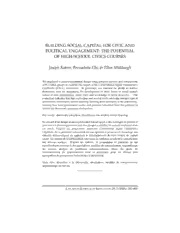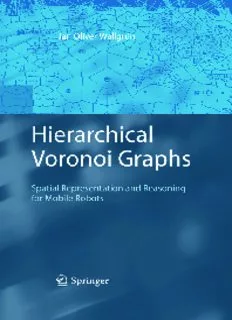
Hierarchical Voronoi Graphs: Spatial Representation and Reasoning for Mobile Robots PDF
Preview Hierarchical Voronoi Graphs: Spatial Representation and Reasoning for Mobile Robots
Hierarchical Voronoi Graphs Jan Oliver Wallgrün Hierarchical Voronoi Graphs Spatial Representation and Reasoning for Mobile Robots Dr.-Ing. Jan Oliver Wallgrün Cognitive Systems Group Department of Mathematics and Informatics University of Bremen P.O. Box 330 440 28334 Bremen Germany wallgruen@informatik.uni-bremen.de This thesis was accepted as doctoral dissertation by the Department of Mathematics and Informatics, University of Bremen, under the title “Hierarchical Route Graph Repre- sentations for Mobile Robots Based on Generalized Voronoi Graphs”. Based on this work the author was granted the academic degree Dr.-Ing. Date of oral examination: 19 August 2008 Reviewers: Prof. Christian Freksa, Ph.D. (University of Bremen, Germany) Prof. Benjamin Kuipers, Ph.D. (University of Texas at Austin, USA) ISBN 978-3-642-10302-5 e-ISBN 978-3-642-10345-2 DOI 10.1007/978-3-642-10345-2 SpringerHeidelbergDordrechtLondonNewYork Library of Congress Control Number: 2009941853 ACM Computing Classification (1998): I.2, J.2. © Springer-Verlag Berlin Heidelberg 2010 This work is subject to copyright. All rights are reserved, whether the whole or part of the material is concerned, specifically the rights of translation, reprinting, reuse of illustrations, recitation, broadcasting, reproduction on microfilm or in any other way, and storage in data banks. Duplication of this publication or parts thereof is permitted only under the provisions of the German Copyright Law of September 9, 1965, in its current version, and permission for use must always be obtained from Springer. Violations are liable to prosecution under the German Copyright Law. The use of general descriptive names, registered names, trademarks, etc. in this publication does not imply, even in the absence of a specific statement, that such names are exempt from the relevant protective laws and regulations and therefore free for general use. Cover design: KuenkelLopka GmbH Printed on acid-free paper Springer is part of Springer Science+Business Media (www.springer.com) v Foreword Whatisspace?Istherespacewhenthereareobjectstooccupyitoristherespaceonly when there are no objects to occupy it? Can there be space without objects? These areoldphilosophicalquestionsthatconcerntheontologyofspaceinthephilosophical senseof‘ontology’–whatisthenatureofspace? Cognitive science in general and artificial intelligence in particular are less con- cernedwiththenatureofthingsthanwiththeirmentalconceptualizations. Inspatial cognition research we address questions like What do we know about space? How is space represented? What are the representational entities? What are the repre- sentational structures? Answers to these questions are described in what is called ontologies in artificial intelligence. Different tasks require different knowledge, and different representations of knowledge facilitate different ways of solving problems. Inthisbook,JanOliverWallgründevelopsandinvestigatesrepresentationalstructures to support tasks of autonomous mobile robots, from the acquisition of knowledge to theuseofthisknowledgefornavigation. The research presented is concerned with the robot mapping problem, the prob- lem of building a spatial representation of an environment that is perceived by sen- sorsthatonlyprovideincompleteanduncertaininformation;thisinformationusually needs to be related to other imprecise or uncertain information. The routes a robot can take can be abstractly described in terms of graphs where alternative routes are representedbyalternativebranchesintheseroutegraphs. Theproposedhierarchical Voronoigraphrepresentationprovidesaconceptualizationofspaceexcellentlysuited fornavigation,high-levelspatialreasoningaboutenvironments,andagent-agentcom- municationaboutnavigablespace.TheproblemisthattheVoronoirepresentationsare rathersensitivetomeasurementerrors;thereforeuniquerepresentationscannoteasily bederivedinpractice. Inthisbook,JanOliverWallgrünpresentsanumberofsignifi- cantcontributionstothestateoftheartinrobotmappingbydevelopingtechniquesfor generatingstableVoronoirepresentationsfromrealsensordata. RobotmappingandtheconstructionofVoronoigraphscanalsobeseenasaspatial reasoningprobleminwhichlocalspatialknowledgehastobeconsistentlyintegrated into global knowledge. On an abstract qualitative level, these kinds of spatial rea- soning problems are studied in the area of qualitative spatial reasoning. Jan Oliver Wallgrünsuccessfullybringstogetherthesetwodistinctresearchareas;thisresultsin amulti-hypothesistrackingframeworkfortopologicalmapping.Fromtheperspective ofqualitativespatialreasoning, theworkdescribesaninstructiveapplicationdomain forcomparingspatialcalculi.Italsoprovidesvaluableresultsregardingtheapplicabil- ityofdirectioninformationandexistingreasoningtechniques.Theresearchpresented in this book raises significant challenges for the development of spatial calculi and spatialreasoningsystemsthathavetobeaddressedbyfuturetheoreticalresearch. Bremen, ChristianFreksa July,2009 vii Preface Learninganinternalspatialmodelofaninitiallyunknownenvironmentisconsidered to be one of the fundamental capabilities for an autonomous spatial agent. It is no- ticeable that—in contrast to what is known about mental spatial representations of humans—most map learning approaches in robotics employ sensor-near representa- tionformatsinwhichtheenvironmentisdescribedbyprovidingpreciselocationsof environmentalfeaturesusingasingleandabsoluteframeofreference. Thequestion of how the spatial properties of the environment should best be represented in order to support fundamental tasks like navigation and communication about space is fre- quently not addressed at all. Instead, the focus is on the problem of how to build upaspatialmodelfromuncertainsensordataforarepresentationapproachwhichis assumedasgiven. One goal of the work described in this book is to take a more general view on the robot mapping problem, explicitly distinguishing between the spatial representa- tion perspective and the uncertainty handling perspective: The spatial representation perspectiveisconcernedwithwhatkindofspatialinformationshouldberepresented and how this information should be represented in the model in order to adequately support a broad range of spatial competences. The uncertainty handling perspective addressesthequestionofhowtodealwiththeinherentuncertaintythatmakeslearning ofanenvironmentalmodelsuchachallengingproblem. Themaincontributionsofthisworkaremadewithrespecttooneparticularspa- tial representation approach, in which the environment is modeled as a hierarchical route graph based on the generalized Voronoi diagram. From the spatial representa- tion perspective, this approach is particularly well suited as the core representation forenvironmentswithaclearroutestructure,suchasmostindoorenvironments. The mainchallengewithregardtothiskindofrepresentationandthefocusofthisbookis thedevelopmentoftechniquesthatallowtherobustconstructionofthespatialmodel underuncertainty. Oneunderlyingthesisofthisworkisthatthecombinationofratherabstractrepre- sentations—liketheroutegraphsconsideredhere—withprovenuncertaintyhandling methods is a promising direction of research. It has the potential of leading to ap- proacheswhichareatthesametimerobustandwell-suitedtorealizehigh-levelspatial cognitive abilities. Another concern of this book is to investigate the application of constraint satisfaction techniques stemming from research on qualitative spatial rea- soning for consistently integrating local observations into survey knowledge in the contextofrobotmapping. Thetechniquesdevelopedinthisbookareconcernedwiththreedifferentaspects ofthemodelacquisitionprocess: First,theproblemofconstructingtheproposedhi- erarchical representation from noisy 2D range data is considered, assuming that the correctdataassociationbetweenperceivedelementsandthecorrespondingelements in the robot’s internal model is given. The main results are a measure to assess the viii Preface relevanceandstabilityofVoronoinodesandthemethodstoautomaticallybuildupthe hierarchybasedonthismeasure. Second,thedataassociationproblemisconsideredwiththegoalofachievingre- liable identification of Voronoi nodes on the local level. A matching approach for Voronoigraphsisdevelopedwhichtakesintoaccountvariationscausedbysensorlim- itationsandallowstheincorporationofgeometricconstraints. Third, to deal with uncertainty on the global level, mapping is formulated as the problemoffindingaminimalroutegraphmodelthatexplainsthehistoryofobserva- tionsandactions, anapproachwhichhasbeenproposedbyKuipers. Thedeveloped solutionconsistsofabest-firstbranchandboundsearchthroughthetreeofpossible associationsofnodesresultinginasimultaneoustrackingofmultiplemaphypotheses. Thefocushereisoninvestigatingtheadequacyofqualitativedirectionconstraintsand theplanarityconstrainttosignificantlyreducethesearchspace. Besidestheindividualtechniquesdevelopedinthiswork,whichcanbecombined inmultipleways,anoverallmappingsystemispresentedthatisabletoconstructthe Voronoi-based hierarchical route graph representation directly from range data. Al- thoughthedescribedmethodshavebeendevelopedwithregardtothisparticularrep- resentation,contributionslikethedataassociationapproachandtheresultsconcerning globalmappingusingqualitativespatialconstraintsaremoregenerallyapplicableand provideinsightsthatarealsorelevantoutsidetherobotmappingdomain. Acknowledgements Writing this book would not have been possible without the support and input from numerouspeopleIhadthepleasureofmeetingoverthelastfewyearsduringmytime asadoctoralcandidate. IamdeeplygratefulforalltheassistanceIreceived. First and foremost, I would like to thank my advisor, Christian Freksa, for his continuous encouragement and guidance. I appreciate that he gave me the freedom toexploreandpursuemyownideas. Atthesametime,healwaysprovidedvaluable adviceandfeedbackwhenIneededitandhasbeentremendouslysupportive.Iamsin- cerelygratefulforthegreattimeIhadinhisgroupandtheinspiringinterdisciplinary researchenvironmenthehascreated. I also want to express my gratitude to Benjamin Kuipers for his willingness to reviewmythesisandfortakinginterestinmyresearch. Hispioneeringworkandin particularhiscourseattheISCSIinBadZwischenahnin2003hadamajorimpacton thiswork. I also owe many thanks to my colleagues and friends at the Cognitive Systems groupattheUniversitätBremenforcountlessdiscussionsandhelpfulsuggestionswith regardtomyworkandforgenerallycreatingaverycomfortableandentertainingwork- ingenvironment.Inparticular,IwouldliketothankDiedrichWolterforbeingmyfirst addresstodiscussnewideasandforprovidinginvaluableadvice. Specialthanksalso gototheothermembersoftheR3-[Q-Shape]project,FrankDylla,LutzFrommberger, Preface ix andReinhardMoratz. Thecollectiveprojectworkhasbeenhighlyenjoyableandhad ahugeimpactonmyownresearch. Severalpeopledirectlycontributedtothisworkanddeservemygratitude: Cyrill StachnissprovidedtheFastSLAMimplementationsusedfortheevaluationpartofthis work. IalsoutilizedtwoexplorationdatasetsmadepublicallyavailablebyNickRoy andDirkHähnel. MartinHeld’ssoftwareVroniwasusedinthesoftwareimplemen- tations of some of the ideas described here. Stefan Dehm, Lutz Frommberger, Kai- FlorianRichter,ChristophSippel,HolgerSchultheis,andThorstenTimmallhelpedto improvethistextbyprovidingfeedbackonearlierversionsandbyproofreadingit. Financial support of my research by the German Research Foundation (DFG) within the scope of the Spatial Inference project of the SPP Raumkognition and the R3-[Q-Shape]projectoftheSFB/TR8SpatialCognitionisgratefullyacknowledged. Finally,Iwanttoexpressmygratitudetomyfamilyfortheirconstantencourage- ment, love, and support, especially during the last months of intensive writing. This bookisdedicatedtoyou. Bremen, JanOliverWallgrün July,2009 xi Contents 1 Introduction 1 1.1 TheRobotMappingProblem . . . . . . . . . . . . . . . . . . . . . . 2 1.2 TheSpatialRepresentationPerspective. . . . . . . . . . . . . . . . . 3 1.3 TheUncertaintyHandlingPerspective . . . . . . . . . . . . . . . . . 3 1.4 CombiningRepresentationandUncertaintyHandling . . . . . . . . . 4 1.5 RouteGraphsBasedonGeneralizedVoronoiDiagrams . . . . . . . . 5 1.6 Theses,Goals,andContributionsofThisBook . . . . . . . . . . . . 6 1.7 OutlineofThisBook . . . . . . . . . . . . . . . . . . . . . . . . . . 8 2 RobotMapping 11 2.1 ASpatialModelforWhat? . . . . . . . . . . . . . . . . . . . . . . . 14 2.1.1 Navigation . . . . . . . . . . . . . . . . . . . . . . . . . . . 14 2.1.2 SystematicExploration . . . . . . . . . . . . . . . . . . . . . 16 2.1.3 Communication. . . . . . . . . . . . . . . . . . . . . . . . . 16 2.2 Correctness,Consistency,andCriteria . . . . . . . . . . . . . . . . . 17 2.2.1 ExtractabilityandMaintainability . . . . . . . . . . . . . . . 18 2.2.2 InformationAdequacy . . . . . . . . . . . . . . . . . . . . . 18 2.2.3 EfficiencyandScalability . . . . . . . . . . . . . . . . . . . 18 2.3 SpatialRepresentationandOrganization . . . . . . . . . . . . . . . . 19 2.3.1 BasicSpatialRepresentationApproaches . . . . . . . . . . . 19 2.3.2 Coordinate-BasedRepresentations . . . . . . . . . . . . . . . 20 2.3.3 RelationalRepresentations . . . . . . . . . . . . . . . . . . . 26 2.3.4 OrganizationalForms. . . . . . . . . . . . . . . . . . . . . . 31 2.4 UncertaintyHandlingApproaches . . . . . . . . . . . . . . . . . . . 36 2.4.1 IncrementalApproaches . . . . . . . . . . . . . . . . . . . . 37 2.4.2 Multi-passApproaches . . . . . . . . . . . . . . . . . . . . . 41 2.5 Conclusions . . . . . . . . . . . . . . . . . . . . . . . . . . . . . . . 42 3 Voronoi-BasedSpatialRepresentations 45 3.1 VoronoiDiagramandGeneralizedVoronoiDiagram. . . . . . . . . . 45 3.2 GeneralizedVoronoiGraphandEmbeddedGeneralizedVoronoiGraph 47 3.3 AnnotatedGeneralizedVoronoiGraphs . . . . . . . . . . . . . . . . 49 xii Contents 3.4 HierarchicalAnnotatedVoronoiGraphs . . . . . . . . . . . . . . . . 50 3.5 PartialandLocalVoronoiGraphs. . . . . . . . . . . . . . . . . . . . 51 3.6 AnInstanceoftheHAGVG. . . . . . . . . . . . . . . . . . . . . . . 53 3.7 StabilityProblemsofVoronoi-BasedRepresentations . . . . . . . . . 54 3.8 StrengthsandWeaknessesoftheRepresentation . . . . . . . . . . . . 55 4 SimplificationandHierarchicalVoronoiGraphConstruction 59 4.1 RelevanceMeasuresforVoronoiNodes . . . . . . . . . . . . . . . . 60 4.2 ComputationofRelevanceValues . . . . . . . . . . . . . . . . . . . 64 4.3 VoronoiGraphSimplification . . . . . . . . . . . . . . . . . . . . . . 69 4.4 HAGVGConstruction . . . . . . . . . . . . . . . . . . . . . . . . . 72 4.5 AdmittingIncompleteInformation . . . . . . . . . . . . . . . . . . . 73 4.6 ImprovingtheEfficiencyoftheRelevanceComputation. . . . . . . . 75 4.7 IncrementalComputation . . . . . . . . . . . . . . . . . . . . . . . . 80 4.8 ApplicationScenarios . . . . . . . . . . . . . . . . . . . . . . . . . . 82 4.8.1 IncrementalHAGVGConstruction. . . . . . . . . . . . . . . 82 4.8.2 RemovalofUnstableParts . . . . . . . . . . . . . . . . . . . 82 4.8.3 AutomaticRouteGraphGenerationfromVectorData. . . . . 82 5 VoronoiGraphMatchingforDataAssociation 85 5.1 TheDataAssociationProblem . . . . . . . . . . . . . . . . . . . . . 85 5.1.1 DataAssociationsandtheInterpretationTree . . . . . . . . . 86 5.1.2 DataAssociationApproaches . . . . . . . . . . . . . . . . . 88 5.2 AGVGMatchingBasedonOrderedTreeEditDistance . . . . . . . . 90 5.2.1 OrderedTreeMatchingBasedonEditDistance . . . . . . . . 92 5.2.2 OverallEditDistance . . . . . . . . . . . . . . . . . . . . . . 97 5.2.3 ModelingRemovalandAdditionCosts . . . . . . . . . . . . 98 5.2.4 Optimizations . . . . . . . . . . . . . . . . . . . . . . . . . 99 5.2.5 Complexity . . . . . . . . . . . . . . . . . . . . . . . . . . . 99 5.3 IncorporatingConstraints . . . . . . . . . . . . . . . . . . . . . . . . 100 5.3.1 UnaryConstraintsBasedonPoseEstimatesandNodeSimilarity101 5.3.2 BinaryConstraintsBasedonRelativeDistance . . . . . . . . 104 5.3.3 TernaryAngleConstraints . . . . . . . . . . . . . . . . . . . 106 5.4 MapMergingBasedonaComputedDataAssociation. . . . . . . . . 109 6 GlobalMapping: MinimalRouteGraphsUnderSpatialConstraints 113 6.1 TheoreticalProblem. . . . . . . . . . . . . . . . . . . . . . . . . . . 114 6.2 BranchandBoundSearchforMinimalModelFinding . . . . . . . . 123 6.2.1 SearchThroughtheInterpretationTree . . . . . . . . . . . . 124 6.2.2 Best-FirstBranchandBoundSearchBasedonSolutionSize . 126 6.2.3 ExpandandUpdateOperations . . . . . . . . . . . . . . . . 128 6.2.4 TwoVariantsoftheMinimalModelFindingProblem . . . . . 134 6.3 PruningBasedonSpatialConstraints. . . . . . . . . . . . . . . . . . 136
Description:The list of books you might like

Believe Me

What Happened to You?

Do Epic Shit

The Mountain Is You
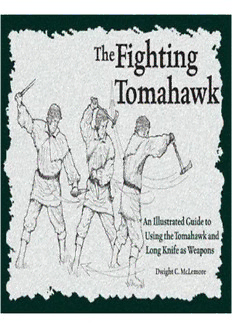
The Fighting Tomahawk An Illustrated Guide to Using the Tomahawk and Long Knife as Weapons
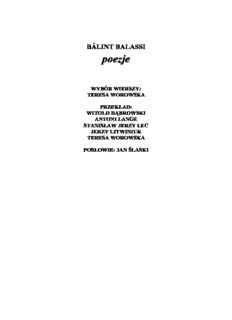
Bálint Balassi poezje
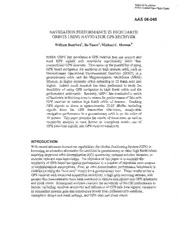
NAVIGATION PERFORMANCE IN HIGH EARTH ORBITS USING NAVIGATOR GPS RECEIVER
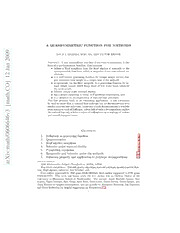
A quasisymmetric function for matroids
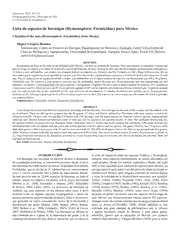
HYMENOPTERA: Lista de especies de hormigas (Hymenoptera: Formicidae) para México
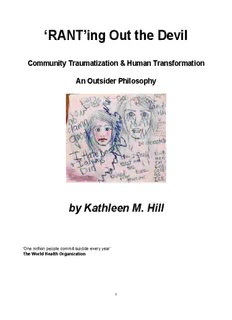
C0PY - The Anna Institute

Sociedade e Comunicacao: Estudos sobre Jornalismo e Identidades
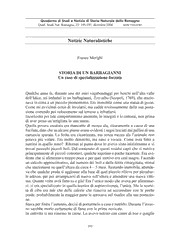
Storia di un barbagianni: un caso di specializzazione forzata
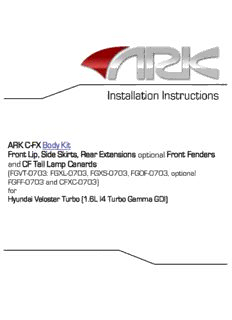
Ark Performance Body Kits Installation Instructions

Greek Government Gazette: Part 7, 2006 no. 630
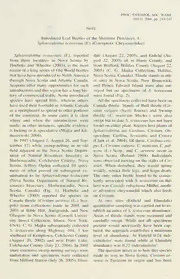
Introduced leaf beetles of the maritime provinces, 1: Sphaeroderma testaceum (F.) (Coleoptera: Chrysomelidae)
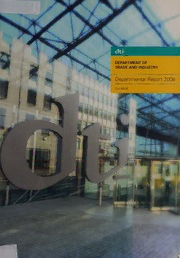
Departmental report : 2006
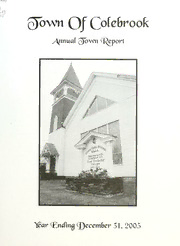
Colebrook, New Hampshire annual report

Cahiers du GRM, 8
